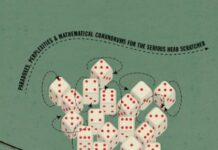
Ebook Info
- Published: 2012
- Number of pages: 244 pages
- Format: PDF
- File Size: 5.33 MB
- Authors: Paul J. Nahin
Description
How two pioneers of math and technology ushered in the computer revolutionBoolean algebra, also called Boolean logic, is at the heart of the electronic circuitry in everything we use—from our computers and cars, to home appliances. How did a system of mathematics established in the Victorian era become the basis for such incredible technological achievements a century later? In The Logician and the Engineer, Paul Nahin combines engaging problems and a colorful historical narrative to tell the remarkable story of how two men in different eras—mathematician and philosopher George Boole and electrical engineer and pioneering information theorist Claude Shannon—advanced Boolean logic and became founding fathers of the electronic communications age. Nahin takes readers from fundamental concepts to a deeper and more sophisticated understanding of modern digital machines, in order to explore computing and its possible limitations in the twenty-first century and beyond.
User’s Reviews
Reviews from Amazon users which were colected at the time this book was published on the website:
⭐The Logician and the Engineer provides the interested reader with a short history of George Boole and Claude Shannon as well as a brief overview of how Boolean logic can be used to craft circuits for computation. The book covers much ground and doesn’t assume too much background to the reader, though it does require more than high school math to appreciate many aspects (despite the authors claims otherwise).I actually started the book being frustrated as the author poses to the reader an example of an electrical circuit to the reader and claims one should at least understand that before continuing. After having read that the book requires only high school math and then being shown a problem which is poorly worded and hard to understand I was immediately annoyed with the author (for whom I own other books from). Nonetheless I moved on from that and the book went into the history of both Boole and Shannon. These sections are short but informative, there are some aspects of the writing which don’t add to the content but I guess it is the author’s style which unfortunately aren’t the most coherent, for example discussing how a comment from Shannon’s first wife was evidence she knew he might have mental problems 40 yrs later. The author then moves on to more math and engineering. The author provides the reader with the ideas of Boolean Algebra and how to use Karnaugh maps. This is clear and well written. The author then moves on to circuits and how they can be used to represent logical statements if constructed properly. The author goes in to some basic probability theory and sets up the reader in the next chapter for some ideas in information theory which was one of Shannon’s main research focus. The author discusses flip flops next and sequential state digital circuits. The material here is not nearly as clear as can be found elsewhere. The author switches gears towards the end and introduces the ideas of universal computation and Turing machines. The examples used are interesting but the author goes in to some tangent about an eager beaver program and how it takes exponential time to halt which doesn’t add to understanding Turing machines and is just a random diversion that happens to interest the author. The author then moves in to some more complex ideas and how heat generated by computers can be considered a result of thermodynamics and information theory. He also discusses quantum computation briefly.This book will give the patient reader a sense of what goes in to circuit design and how computation can be done via using electricity to represent Boolean logic. Without assuming knowledge from the reader, the author is able to communicate some basic ideas fairly clearly. I think the author can be arrogant and testing with the reader (in a bad way). There are times when he brings up some nostalgic story about his early days in graduate school designing a circuit and the nuances in connecting wires but given his target audience including this is both likely to be uninteresting and a distraction. The book has many parts in which the author tries to show how clever he is which is totally unnecessary as he is supposedly writing for a layperson audience. Given some chapters are excellent introductions to the subject but the general writing is really bad I gave 4 stars but would lean lower to be honest. I am glad I read it though, but would skip much of the material on a second read.
⭐This is an unusual book. About two unusual thinkers, Boole (1815-1864) and Shannon (1949-2001). Boole established logic as a branch of mathematics. Shannon used Boolean logic to design digital circuits and ignited Information Theory. We are in 2012, Nahin is connecting together the achievements of both thinkers to our information age. To do so he describes with some depth a wide range of topics starting with Boolean logic and digital circuits. Passing through probability theory, information theory and Turing machines. To end up with thermodynamics of information and quantum computing. Out of my comfort zone therefore unusually fun. Thus demanding an unusual curious reader. Is that you?
⭐Great book that tells the story of how computers actually began with the genius of two men.
⭐Paul Nahin’s book, “The Logician and the Engineer,” is deficientin several ways.Its first deficiency is that Nahin has relatively little to sayabout the putative subjects of his book, filling in with acongeries of topics of interest to himself. In spite of thebook’s sub-title — “How George Boole and Claude Shannon Createdthe Information Age” — Boole and Shannon are minor actors inthis book. Of its more than 220 pages, one 24-page chapterprovides brief biographies of Boole and Shannon, and anotherchapter of the same length discusses Boolean algebra. The bulk ofthe book, however, is given over to digital circuit-design,probability, Turing machines, logic puzzles, and speculationsabout future computers.The reader gets a warning of strange things to come in Chapter 1,entitled “What You Need to Know to Read This Book.” The chapterfocuses heavily, and weirdly, on potentiometers, ending with ademonstration of the parabolic shape of the resistance-functionof two ganged potentiometers. Oddly for an electrical engineer,Nahin states that the term “rheostat” is “a rather old-fashionedword” for a potentiometer. Potentiometers and rheostats areactually quite different devices. Although both are three-terminal variable resistors, a potentiometer is a voltage-dividerthat uses all three terminals, whereas a rheostat uses twoterminals (the slider and one other terminal) to control currentby connecting a variable resistance in series with the load.A second deficiency of this book is its pervasive carelessness.An example is the section-title, “The Mathematician,” that beginsthe chapter on Boole and Shannon — even though Boole is called”The Logician” in the book’s title. This carelessness is alsoexhibited by misspellings such as “Pierce,” “Goldstein,” and”Baggage.” These are readily interpreted by readers interested incomputers and logic. More likely to cause confusion is hisreference to “the 1940 Alfred Nobel Prize” awarded to Shannon.This prize is named after Alfred Noble, not the famous Swede.The rest of my comments concern a final deficiency of this book:its shaky grasp of Boolean algebra and the work of Boole andShannon.Nahin’s chapter on Boolean algebra is particularly muddled. Inthe section, “Boole’s Algebra of Sets,” he announces that Boole”used our inclusive-or + symbol for his exclusive-or.” Boole’s +is not, however, exclusive-or. Boole invented two algebras in his”Laws of Thought.” In the first, the sum x+x has no meaning; theaddends must be disjoint. In the second algebra, x+x=2x. In thesection of this chapter entitled “Propositional Calculus,” Nahindefines a proposition, discusses some propositional operations,and then announces that he’s really been talking about Booleanalgebra: “There is nothing more to Boolean algebra than what I’vealready told you.” Later in this section he asserts, “Booleanvariables can have just one of two values (0 or 1). So, toconfirm an identity, all we have to do is examine, one by one,all the possible combinations of variable values (a finitenumber).” Unlike propositions, however, Boolean variables canhave values other than 0 or 1. Some examples are a subset of aset, a divisor of 30, and a’+b. It is indeed true that one needonly consider the values 0 and 1 to verify an identity (thisproperty is confirmed by the Lowenheim-Muller VerificationTheorem), but not because a Boolean algebra is necessarily two-valued.Nahin is enthusiastic about Shannon’s “famous epiphany ofmarrying Boolean algebra with electrical switching circuits” inhis 1938 paper, “A Symbolic Analysis of Relay and SwitchingCircuits” — but seems not to have read the paper. Rather thanBoolean algebra, Shannon’s analysis is based on propositionallogic. (Shannon mentions Boole as an historical figure, but doesnot cite Boole, or any work on Boolean algebra, in hisreferences.) In a further misunderstanding of the paper, Nahinreverses Shannon’s association of series and parallel connectionswith logical “or” and logical “and,” respectively.Anyone buying this book to learn “How George Boole and ClaudeShannon Created the Information Age” will be disappointed.
⭐Whenever I see a title of a book authored by P. Nahin, I am looking eagerly to by it and I won’t be disappointed. This book is no exception and actually from its title, as a mathematician, I was more confidence that this book is more interesting for me. Nahin shows in this book how a pure logic thoughts of the 19th English logician George Boole are the backbone of the spine of the incredible technology advances of present world. Nahin’s admirable style is lucid, informative, and charming. No doubts the book deserve the highest rate, the five stars and more ..
⭐Another enjoyable and thought provoking book by Nahin. All of the books I have read by him cause one to explore further some of the areas touched upon in the books. Thank you to Paul Nahin for expending the time and effort to write this book.
⭐it is ok but not more than that, can not recommend it but no regrets having bought it, thank you
⭐Loved the book
Keywords
Free Download The Logician and the Engineer: How George Boole and Claude Shannon Created the Information Age in PDF format
The Logician and the Engineer: How George Boole and Claude Shannon Created the Information Age PDF Free Download
Download The Logician and the Engineer: How George Boole and Claude Shannon Created the Information Age 2012 PDF Free
The Logician and the Engineer: How George Boole and Claude Shannon Created the Information Age 2012 PDF Free Download
Download The Logician and the Engineer: How George Boole and Claude Shannon Created the Information Age PDF
Free Download Ebook The Logician and the Engineer: How George Boole and Claude Shannon Created the Information Age





